Python language programming - MOOC lecture notes week 9
Knowledge point 1
Data analysis of Python Library
- Numpy: the most basic library for expressing N-dimensional arrays
- Python interface, C language, excellent computing speed
- Python is a basic library for data analysis and scientific computing, supporting Pandas, etc
- It provides direct matrix operation, broadcast function, linear algebra and other functions
- Numpy: the most basic library for expressing N-dimensional arrays

- NumPy Library: http://www.numpy.org
- Pandas:Python data analysis high-level application library
- It provides simple and easy-to-use data structure and data analysis tools
- Understand the relationship between data type and index. Operating index is operating data
- Python's main data analysis library is developed based on Numpy
- Series = index + one-dimensional data
- DataFrame = row column index + 2D data
- Pandas Library: http://pandas.pydata.org
- SciPy: mathematical, scientific and Engineering Computing Library
- It provides a number of mathematical algorithms and engineering data operation functions
- Similar to Matlab, it can be used in applications such as Fourier transform, signal processing and so on
- Python's main scientific computing library is developed based on Numpy
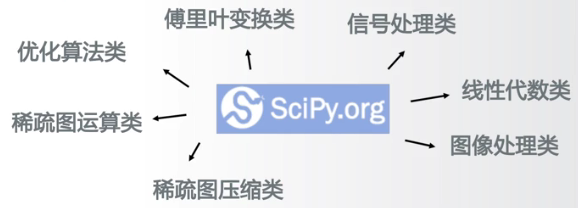
- SciPy: http://www.scipy.org
Data visualization of Python Library
- Matplotlib: high quality 2D data visualization Library
- More than 100 kinds of data visualization effects are provided
- Call each visualization effect through matplotlib.pyplot sub library
- Python's main data visualization library is developed based on Numpy
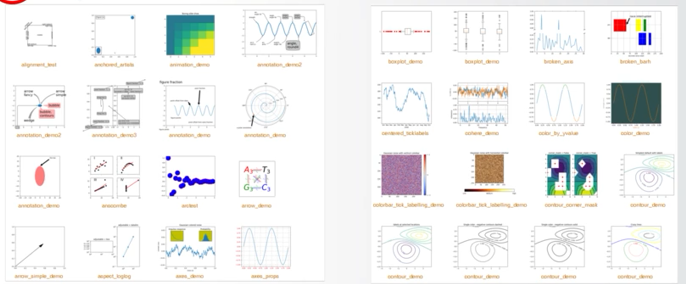
- Matplotlib: http://matplotlib.org
- Seaborn: statistical data visualization Library
- A batch of high-level statistical data visualization display effects are provided
- It mainly displays the distribution, classification and linear relationship among data
- It is developed based on Matplotlib and supports Numpy and Pandas

Seaborn: http://seaborn.pydata.org
- Mayavi: 3D scientific data visualization Library
- It provides a batch of easy-to-use 3D scientific computing data visualization display effects
- The current version is Mayavi2, the main third-party library for 3D visualization
- Support Numpy, TVTK, Traits, envision and other third-party libraries

- Mayavi: http://docs.enthought.com/mayavi/mayavi/
Text processing of Python Library
- PyPDF2: toolset for processing pdf files
- It provides a calculation function for batch processing PDF files
- Support information acquisition, file separation / integration, encryption and decryption, etc
- Fully implemented in Python language, no additional dependency and stable function
from PyPDF2 import PdfFileReader,PdfFileMerger
merger=PdfFileMerger()
input1=open("document1.pdf","rb")
input2=open("document2.pdf","rb")
merger.append(fileobj=input1,pages=(0,3))
merger.merge(position=2,fileobj=input2,pages=(0,1))
output=open("document-output.pdf","wb")
merger.write(output)
- PyPDF2: http://mstamy2.github.io/PyPDF2
- NLTK: natural language text processing third party Library
- It provides a number of simple and easy-to-use natural language text processing functions
- Support language text classification, marking, syntax, semantic analysis, etc
- The best Python natural language processing library
from nltk.corpus import treebank
t=treebank.parsed_sents('wsj_0001.mrg')[0]
t.draw()
- Python docx: create or update third-party libraries for Microsoft Word files
- It provides the calculation function of creating or updating. Doc. Docx and other files
- Add and configure paragraphs, pictures, tables, text, etc., with comprehensive functions
from docx import Document
document = Document()
document.add_heading('Document Title',0)
p=document.add_paragraph('A plain paragraph having some ')
document.add_page_break()
document.save('demo.docx')
- http://python-docx.readthedocs.io/en/latest/index.html
Machine learning of Python Library
- Scikit learn: tool set of machine learning methods
- Provide a number of unified machine learning method function interfaces
- It provides computing functions such as clustering, classification, regression and reinforcement learning
- The most basic and excellent Python third-party library for machine learning
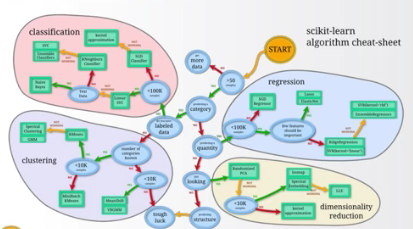
- Scikit-learn: http://scikit-learn.org/
- Tensorflow: machine learning computing framework behind alphago
- Open source machine learning framework promoted by Google
- Based on the data flow graph, the graph nodes represent operations and edges represent tensors
- A way to apply machine learning methods to support Google's artificial intelligence applications
import tensorflow as tf
init = tf.global_variables_initializer()
sess=tf.Session()
sess.run(init)
res=sess.run(result)
print('result:',res)
- TensorFlow: https://www.tensorflow.org/
- MXNet: deep learning computing framework based on Neural Network
- It provides scalable neural network and deep learning computing function
- It can be used in many fields such as automatic driving, machine translation, language recognition and so on
- Python's most important deep learning computing framework

- MXNet: https://mxnet.incubator.apache.org/
Example Holland personality analysis
problem analysis
- Holland personality analysis
- Holland believes that there should be an internal correspondence between personality interest and occupation
- Personality classification: research type, artistic type, social type, enterprise type, traditional type and reality type
- Occupation: engineer, experimenter, artist, salesman, recorder, social worker
- Holland personality analysis radar chart
- Requirements: radar chart to verify Holland's personality analysis
- Input: survey data of various occupational groups combined with interests
- General radar mapping: matplotlib Library
- Professional multidimensional data representation: numpy Library
- Output: radar chart
Example display
import numpy as np
import matplotlib.pyplot as plt
import matplotlib
matplotlib.rcParams['font.family']='SimHei'
radar_labels=np.array(['Research type(I)','Artistic type(A)','Social type(S)','enterprise class(E)','Conventional type(C)','Realistic type(R)'])
data=np.array([[0.40,0.32,0.35,0.30,0.30,0.88],
[0.85,0.35,0.30,0.40,0.40,0.30],
[0.43,0.89,0.30,0.28,0.22,0.30],
[0.30,0.25,0.48,0.85,0.45,0.40],
[0.20,0.38,0.87,0.45,0.32,0.28],
[0.34,0.31,0.38,0.40,0.92,0.28]]) #Data value
data_labels=('artist','Experimenter','engineer','salesman','social worker','Recorder')
angles=np.linspace(0,2*np.pi,6,endpoint=False)
data=np.concatenate((data,[data[0]]))
angles=np.concatenate((angles,[angles[0]]))
radar_labels=np.concatenate((radar_labels,[radar_labels[0]]))
fig=plt.figure(facecolor="white")
plt.subplot(111,polar=True)
plt.plot(angles,data,'o-',linewidth=1,alpha=0.2)
plt.fill(angles,data,alpha=0.25)
plt.thetagrids(angles*180/np.pi,radar_labels)
plt.figtext(0.52,0.95,'Holland personality analysis',ha='center',size=20)
legend=plt.legend(data_labels,loc=(0.94,0.80),labelspacing=0.1)
plt.setp(legend.get_texts(),fontsize='large')
plt.grid(True)
plt.savefig('holland_radar.jpg')
plt.show()
Output results:

infer other things from one fact
- Goal + immersion + proficiency
- The goal of programming: find the goal of interest and find (wa) and (jue)
- Immersion in programming: find realizable methods and think about them
- Proficiency in programming: practice, practice, practice again, proficiency
Knowledge point 2
Python library web crawler
- Requests: the most friendly web crawler Library
- It provides a simple and easy-to-use HTTP protocol like web crawler function
- Support connection pool, SSL, Cookies.HTTP(S) proxy, etc
- Python's main page level Web crawler Library
import requests
r=requests.get('https://api.github.com/user',auth=('user','pass'))
r.status_code
r.headers['content-type']
r.encoding
r.text
- Requests: http://www.python-requests.org/
- Scrapy: excellent web crawler framework
- It provides the framework function and semi-finished product of building web crawler system
- Support batch and regular web page crawling, provide data processing flow, etc
- Python is the most important and professional web crawler framework
- Scrapy: Python data analysis high level application library https://scrapy.org
- pyspider: a powerful Web page crawling system
- It provides a complete web page crawling system construction function
- Support database backend, message queue, priority, distributed architecture, etc
- Python's important third-party library of web crawlers
- pyspider: http://docs.pyspider.org
Web information extraction of Python Library
- Beautiful soup: parsing library for HTML and XML
- It provides the function of parsing Web information such as HTML and XML
- Also known as beautiful soup 4 or bs4, it can load a variety of parsing engines
- It is often used with web crawler libraries, such as scrape, requests, etc
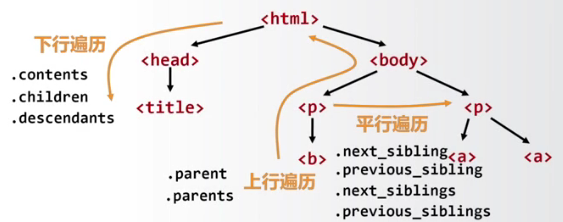
- Beautiful Soup: https://www.crummy.com/software/BeautifulSoup/bs4
- Re: regular expression parsing and processing library
- Provides a number of general functions for defining and parsing regular expressions
- It can be used in various scenarios, including fixed-point Web information extraction
- Python is one of the most important standard libraries without installation

- Re: https://docs.python.org/3.6/library/re.html
- Python Goose: feature library for extracting article type Web pages
- It provides the function of extracting metadata such as article information / video in Web pages
- For specific types of Web pages, the application coverage is wide
- Python's main Web information extraction Library
from goose import Goose
url='http://www.elmundo.es/elmundo/2012/10/28/espana/1351388909.html'
g=Goose({'use_meta_language':False,'target_language':'es'})
article=g.extract(url=url)
article.cleaned_text[:150]
- Python-Goose: https//github.com/grangier/python-goose
Web site development of Python Library
- Django: the most popular Web application framework
- It provides the basic application framework for building Web system
- MTV mode: model, template, views
- Python is the most important Web application framework, a slightly complex application framework
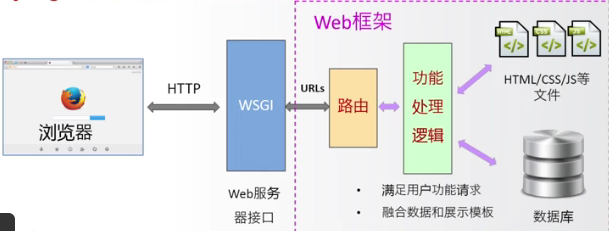
- Django: https://www.djangoproject.com
- Pyramid: a moderate scale Web application framework
- It provides a simple and convenient application framework for building Web system
- Medium size, moderate scale, suitable for rapid construction and moderate expansion of class applications
- Python product level Web application framework is simple to start and has good scalability
from wsgiref.simple_server import make_server
from pyramid.config import Configurator
from pyramid.response import Response
def hello_world(request):
return Response('Hello World!')
if __name__ =='__main__':
with Configurator() as config:
config.add_route('hello','/')
config.add_view(hello_world,route_name='hello')
app=config.make_wsgi_app()
server=make_server('0.0.0.0',6543,app)
server.serve_forever()
- Pyramid: https://trypyramid.com/
- Flask: Web application development micro framework
- It provides the simplest application framework for building Web system
- Features: simple, small-scale, fast
- Django > pyramid > flask OK
from flask import Flask
app = Flask(__name__)
@app.route('/')
def hello_world():
return 'Hello,World!'
- Flask: http://flask.pocoo.org
Network application development of Python Library
- WeRoBot: WeChat official account development framework
- It provides the function of parsing wechat server messages and feedback messages
- An important technical means of establishing wechat robot
import werobot robot =werobot.WeRoBot(token='tokenhere') @robot.handler def hello(message): return 'Hello World!'
- WeRoBot: https://github.com/offu/WeRoBot
- aip: Baidu AI open platform interface
- Python function interface for accessing Baidu AI service is provided
- Voice, face, OCR, NLP, knowledge map, image search and other fields
- Python is the main way of Baidu AI application

- aip: https://github.com/Baidu-AIP/python-sdk
- MyQR: QR code generation third party Library
- It provides a series of functions for generating QR codes
- Basic QR code, art QR code and dynamic QR code

- MyQR: https://github.com/sylnsfar/qrcode
Graphical user interface of Python Library
- Pyqt5: Python interface of Qt development framework
- Provides a Python API interface for creating Qt5 programs
- Qt is a very mature cross platform desktop application development system with complete GUI
- Recommended Python GUI development third-party library
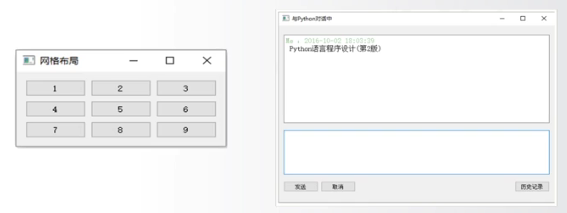
- PyQt5: https://www.riverbankcomputing.com/software/pyqt
- wxPython: cross platform GUI development framework
- Provides a cross platform GUI development framework dedicated to Python
- Understand the relationship between data type and index. Operating index is operating data
- Python's main data analysis library is developed based on Numpy
import wx app=wx.App(False) frame=wx.Frame(None,wx.ID_ANY,"Hello World") frame.Show(True) app.MainLoop()
- wxPython: https://www.wxpython.org
- PyGObject: develop GUI function library using GTK +
- It provides the function of integrating GTK +, WebKit GTK + and other libraries
- GTK: a cross platform GUI framework for user graphical interface
- Example: Anaconda uses this library to build GUI
import gi
gi.require_version("Gtk","3.0")
from gi.repository import Gtk
window =Gtk.Window(title="Hello World")
window.show()
window.connect("destroy",Gtk.main_quit)
Gtk.main()
- PyGObject: https://pygobject.readthedocs.io
Game development of Python Library
- PyGame: a simple game development library
- It provides a simple game development function and implementation engine based on SDL
- Understand the response mechanism of the game to external input and the role construction and interaction mechanism
- The main third-party library for getting started with Python games

- PyGame: http://www.pygame.org
- Panda3D: open source, cross platform 3D rendering and game development library
- A 3D game engine that provides Python and C + + interfaces
- Support many advanced features: normal map, gloss map, cartoon rendering, etc
- Jointly developed by Disney and Carnegie Mellon University

- Panda3D: http://www.panda3d.org
- cocos2d: a framework for building interactive applications of 2D games and graphical interfaces
- It provides the graphics rendering function of game development based on OpenGL
- It supports GPU acceleration and adopts tree structure to manage game object types hierarchically
- Suitable for 2D professional game development

- cocos2d: http://python.cocos2d.org/
Virtual reality of Python Library
- VR Zero: Python library for developing VR applications on raspberry pie
- It provides a large number of functions related to VR development
- VR development library for raspberry pie supports miniaturization of equipment and simplified configuration
- It is very suitable for beginners to practice VR development and application


- VR Zero: https://github.com/WayneKeenan/python-vrzero
- Pyovr: the Python development interface of oculus rift
- Python development library for Oculus VR device
- Based on mature VR equipment, provide a full set of documents and industrial application equipment
- An idea of Python + virtual reality exploration

- pyovr: https://github.com/cmbruns/pyovr
- Wizard: General VR development engine based on Python
- Professional enterprise virtual reality development engine
- Provide detailed official documents
- It supports a variety of mainstream VR hardware devices and has certain universality

- Vizard: http://www.worldviz.com/vizard-virtual-reality-software
Graphic art of Python Library
- Quads: the art of iteration
- The image is divided into four iterations to form a pixel wind
- Dynamic or static images can be generated
- Easy to use, with a high degree of display

- Quads: https://github.com/fogleman/Quads
- ascii_art: ASCII Art Library
- Convert normal pictures to ASCII art style
- The output can be plain text or color text
- It can be output in picture format
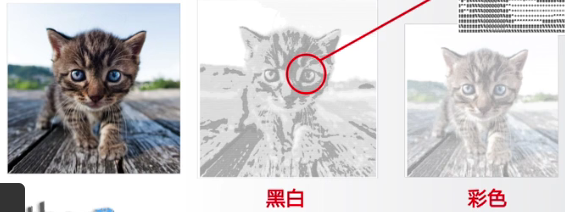
- ascii_art: https://github.com/jontonsoup4/ascii_art
- turtle: turtle drawing system
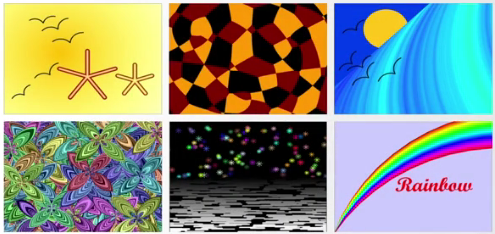
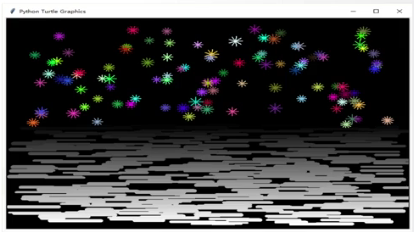
- Random Art
- turtle: https://docs.python.org/3/library/turtle.html
Instance rose drawing
problem analysis
- Rose drawing
- Rendering mechanism: rendering of basic graphics of turtle
- Drawing ideas: vary from person to person
- The world is as big as the thought is
#The code is as follows:
import turtle as t
#Define a curve drawing function
def DegreeCurve(n,r,d=1):
for i in range(n):
t.left(d)
t.circle(r,abs(d))
#Initial position setting
s=0.2 #size
t.setup(450*5*s,750*5*s)
t.pencolor("black")
t.fillcolor("red")
t.speed(100)
t.penup()
t.goto(0,900*s)
t.pendown()
#Draw flower shape
t.begin_fill()
t.circle(200*s,30)
DegreeCurve(60,50*s)
t.circle(200*s,30)
DegreeCurve(4,100*s)
t.circle(200*s,50)
DegreeCurve(50,50*s)
t.circle(350*s,65)
DegreeCurve(40,70*s)
t.circle(150*s,50)
DegreeCurve(20,50*s,-1)
t.circle(400*s,60)
DegreeCurve(18,50*s)
t.fd(250*s)
t.right(150)
t.circle(-500*s,12)
t.left(140)
t.circle(550*s,110)
t.left(27)
t.circle(650*s,100)
t.left(130)
t.circle(-300*s,20)
t.right(123)
t.circle(220*s,57)
t.end_fill()
#Draw flower branch shape
t.left(120)
t.fd(280*s)
t.left(115)
t.circle(300*s,33)
t.left(180)
t.circle(-300*s,33)
DegreeCurve(70,225*s,-1)
t.circle(350*s,104)
t.left(90)
t.circle(200*s,105)
t.circle(-500*s,63)
t.penup()
t.goto(170*s,-30*s)
t.pendown()
t.left(160)
DegreeCurve(20,2500*s)
DegreeCurve(220,250*s,-1)
#Draw a green leaf
t.fillcolor('green')
t.penup()
t.goto(670*s,-180*s)
t.pendown()
t.right(140)
t.begin_fill()
t.circle(300*s,120)
t.left(60)
t.circle(300*s,120)
t.end_fill()
t.penup()
t.goto(180*s,-550*s)
t.pendown()
t.right(85)
t.circle(600*s,40)
#Draw another green leaf
t.penup()
t.goto(-150*s,-1000*s)
t.pendown()
t.begin_fill()
t.rt(120)
t.circle(300*s,115)
t.left(75)
t.circle(300*s,100)
t.end_fill()
t.penup()
t.goto(430*s,-1070*s)
t.pendown()
t.right(30)
t.circle(-600*s,35)
t.done()
infer other things from one fact
- Art is to programming, and design is to programming
- Art: thought first, programming is the means
- Design: ideas are as important as programming
- Engineering: programming first, thought second
- Programming is not important, thought is important!
- Know yourself: clarify your goals and have your own thoughts (Ideas)
- Methods and methods: programming is only a means. Be proficient and prepare for a rainy day to serve the thought
- Who to program for: combine self-development with the development of the motherland to create real value
Week 9 test questions
Programming problem
Question 1 acquisition of basic system information
Title Description: obtain the recursion depth of the system, the current execution file path, the maximum UNICODE coding value of the system, and print out.
Output format:
Reclimit: < depth >, expath: < file path >, Unicode: < maximum encoding value >
Tip: please find the above functions in the sys standard library
Input example: None
Output example: reclimit: 500, exit: / bin / python, Unicode: 1411
The code is as follows:
import sys
print("RECLIMIT:{}, EXEPATH:{}, UNICODE:{}".format(sys.getrecursionlimit(), sys.executable, sys.maxunicode))
Two dimensional data table output
Topic Description: tabulate can output two-dimensional data in tables. It is an excellent third-party computing ecosystem in Python.
Refer to the data and code given in the programming template, write a program, and be able to output the tabular data of the following style effects.

from tabulate import tabulate
data = [ ["Beijing University of Technology", "985", 2000], \
["Tsinghua University", "985", 3000], \
["Dalian University of Technology", "985", 4000], \
["Shenzhen University", "211", 2000], \
["Shenyang University", "Provincial capital", 2000], \
]
print(tabulate(data, tablefmt="grid"))